On average, people spend two and a half hours a day scrolling through social networks and media. That’s way more than customers would ever devote to any brand’s website or company’s blog. And the chances of attracting someone's attention on social media are much greater than on the endless Internet. So, not surprisingly, businesses have become increasingly interested in learning more about social media customer journeys, smoothing those, and ultimately driving sales.
However, the competition between brands on social media is huge, and the 'Unfollow' button is always on hand. Therefore, it’s crucial to grasp the needs of your audience, track their problems, and solve them in time while delivering the best possible experience at different stages of their journey with your brand. A magnifying glass through which you can consider the most minor flaws in customer experience and understand what to do about it can be customer journey mapping.
Contents
- 1 Social media customer journey mapping initiative
- 2 Social media customer journey persona
- 3 Social media customer journey map
- 3.1 Awareness
- 3.2 First page view/ Checking out content
- 3.3 Following the page
- 3.4 Getting back to the page
- 3.5 Commenting/ Asking questions
- 3.6 Interacting with the Stories
- 3.7 Direct messaging/ Reporting an issue
- 3.8 Choosing a product
- 3.9 Ordering
- 3.10 Waiting for the order
- 3.11 Getting the order
- 3.12 Refund
- 3.13 Re-ordering
- 3.14 Leaving feedback
- 3.15 Recommending the brand
- 4 Putting everything together
- 5 What to do next
- 6 Wrapping up
Social media customer journey mapping initiative
Your business likely already has a social network page or more than one. Perhaps you repost news from the official site into it, using the same pictures. Or turn your social media page into a team live journal that lets customers look behind the scenes of their favorite brand. Or you have reversed your social media into delicious showcases and don’t require followers to go somewhere to make an order by accepting those right there.
Another important thing is the kind of customer experience your audience gets and the goal you are pursuing. Any journey mapping initiative is about balancing the customer experience and business goal(s) by taking an up-close look at your customer's journey.
Let's start by setting a goal, which could be:
- Increasing the number of new subscribers (audience growth);
- Lengthening the time that followers spend in your account (retention);
- Boosting activity on the page (comments, likes, sharing, interaction with stories, etc.);
- Raising the number of orders;
- Doubling the number of repeat orders;
- Getting more positive reviews and marks in the subscribers’ stories ;
- You name it.
You can change your sales strategy how you like, but it won’t work until the experience is lame. To understand exactly where it sags, after defining the goal of your mapping initiative, you need to decide on the persona whose experience affects your business most, learn what their journey looks like, and understand what needs to be improved.
Social media customer journey persona
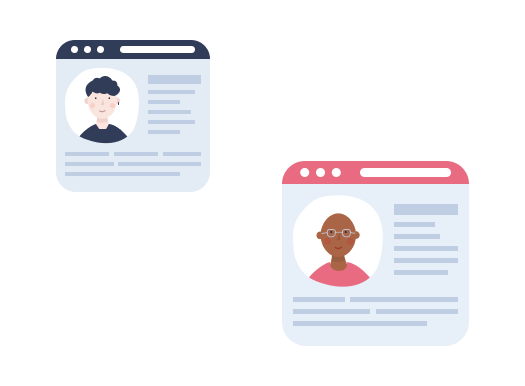
At first glance, an audience taking their customer journey on social media seems relatively homogeneous, except that the demographic characteristics may vary. But let's approach it from a different angle, namely behavioral patterns. Why? Your customer may fall into one demographic pale, but their age or location doesn’t determine their shopping behavior, how they decide, or why they choose one product over another. That's why it's better to group customers according to similar behavior and its nuances (frustrations, goals, backgrounds, etc.), tailoring your service to them.
Let's say you have an indie cosmetics brand you promote on Instagram. You also have a landing page, but the social media page is where you get the most sales. But do you know why people buy your products? Some people look for a gift; others purchase rare items for a collection. Some customers buy for daily use and others just can’t pass by a cute package.
In addition, your clients may share the same goal based on different motivations and frustrations. For instance, there’s Beth, who doesn’t care about product appearance. She’s all about its properties. She also hates when brands put a small thing into a huge box to impress. There’s also Nina, who values product properties more than other characteristics. Yet she loves her purchases to be wrapped up intricately, with ribbons and all that jazz. It doesn't look like one persona, does it?
To collect data that will help you segment the audience into personas:
- Communicate with customer-facing colleagues (sales managers, support agents, marketers, researchers, SMM managers, etc.).
- Conduct research, polls, and surveys.
- Put together your observations and assumptions.
- Run interviews with the clients.
- Find out from leaving customers the reason behind their actions.
When analyzing the data you've obtained, pay attention to the behavioral attributes mentioned above. Most likely, you will end up with several personas. For instance:
- A young beauty influencer, a palette collector, a beginner in the makeup world, and a makeup artist.
- Some will have a conservative background of expensive brands with muted colors and light textures.
- A bored student who’s fed up with the monotony of the mass market and wants to try something new.
- A young teen who wants to try out their first makeup using your brand.
For some, the abundance of colors and shades is a motivating factor; for others, it’s the other way around.
Even if you have multiple personas, this is okay. You don’t have to bend over backward and cover all their journeys. You will need only those that affect your business here and now and correlate with the goal of the journey mapping initiative.
What goals are we talking about? For example, you want to understand why customers don’t come back after the first order on your Instagram account. Then, we need to consider the journey of a new customer who buys cosmetics for personal use instead of a one-time gift. This way, you will cover all stages of the first purchase cycle and understand the difficulties that subsequently lead to a customer drop-off.
For a persona to become visual and evoke empathy in your team, you need to turn it into something like this:
As you see, it's a real person-like profile, with a name, photo, and essential data. By looking at such a profile, you can tell who your persona is, what they need, where to contact them better, and what brands are best for co-promotion, among other things. You may also indicate their personality type to get even more insights into their behavioral patterns.
Once you’re done, the journey time starts.
Social media customer journey map
A social media customer journey map must have a scope. For instance, if you want to analyze the journey of a persona who follows your IG account for months and likes your posts but never purchases from you, such a map doesn’t need Purchasing or Refund stages.
Other cases may involve reviewing all the stages from Awareness to First Purchase and maybe some time after that. Especially when you want to discover why your customers unfollow you or don’t repeat their purchases.
If you want to optimize a regular buyer's social media customer journey, you would want to capture everything from choosing a product to buying and getting their order. If you are concerned about dropping retention, you’d better focus on the stages before the purchase.
Here are some stages you might use for a social media customer journey of any scope:
- Awareness;
- First page view;
- Checking out content;
- Following the page;
- Getting back to the page;
- Commenting;
- Asking questions;
- Interacting with the Stories;
- Direct messaging;
- Reporting an issue;
- Choosing a product;
- Making an order;
- Waiting for the order;
- Getting the order;
- Refund;
- Re-order;
- Leaving feedback;
- Recommending the brand.
Awareness
At this stage, your customer learns you exist. It may happen offline when chatting with friends, seeing a QR-code ad in the physical store, scrolling the recommendations on Instagram, checking out your promo Story, etc.
Possible problems:
- Non-catchy advertising that people scroll through or swipe.
- Your potential client’s friends mention you, but negatively.
- The QR code doesn’t work, so your persona can’t reach your account.
- Your advertising channels don’t match the persona’s favorite channels.
- You don't use your persona's vocab and don’t hit their pains.
Experience smoothers to consider:
- Put the name of your IG account under the QR code. Even if it doesn’t work, a person will have an opportunity to find you manually.
- Find out other channels your persona uses and go there to present yourself and your main social media page.
First page view/ Checking out content
At this stage(s), the persona visits your account for the first time. And as you know, you cannot create the first impression twice. Moreover, 88% of viewers don’t return to a page if they have a terrible experience. Potential clients may leave you right here and, for a reason, be immediately charmed into a subscription or spend some time checking the page and ensuring you’re worthy of their time.
Possible problems:
- People came through misleading advertisements (e.g., your persona followed the link to see a wide choice of autumn palettes yet saw only two theme palettes on your page).
- You present the information chaotically.
- Header info doesn’t meet the persona’s needs (e.g., no shipping worldwide).
- Poor visual content: low-quality photos, dark videos, too many filters used, etc.
- Lots of spam in the comments, meaning the owners don’t care about their page.
- Too many posts are published within a day, so your followers’ Feeds are flooded with your brand.
Experience smoothers to consider:
- Pin a welcome post with essential information to the top of your Feed.
- Create Highlights with helpful Stories and Guides with topic-related content.
- Add the link created with Taplink or a similar tool. So, a recent visitor may find all the needed links to your landing page, download a presentation, go to your YouTube channel, etc.
- Develop a unique brand concept that unites your content, products, and how you interact with your followers. For example, you may be a brand inspired by astronomy. Your cosmetic products are stars that form constellations, a.k.a. collections. All the followers should choose their astrological house with personalized recommendations. Such a page will always arouse interest.
Following the page
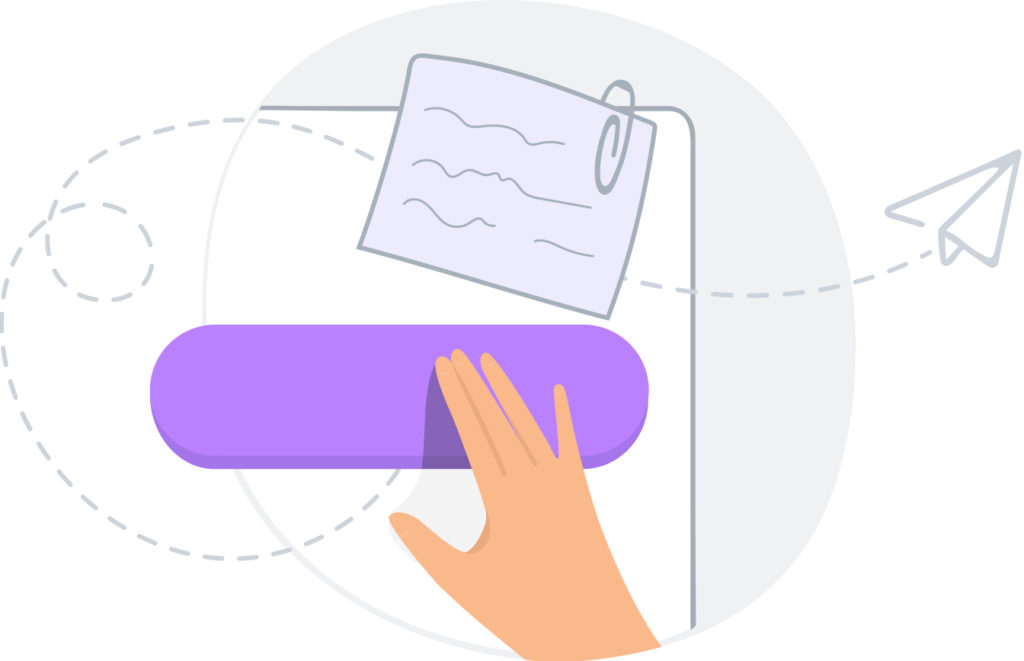
Now, the persona decides to click on the Follow button. That’s just a second of their social media customer journey with you, but you can thank the new follower for subscribing to your page and prove that their subscription is worth it.
Experience smoothers to consider:
- Send a welcome digital gift (a makeup tutorial, a one-time discount for purchase within a month, your presentation, or a cheerful message).
Getting back to the page
Once the persona follows your page, they visit it occasionally and see your content on the Feed or in the Stories. You may increase the followers’ engagement with interactive elements such as stickers, polls, question forms, etc. Suggest that they choose shades for new palettes and talk yourself with your audience in the comments.
Possible problems:
- New content appears too rarely, so the persona forgets about you in between.
- You publish only posts, while the persona prefers to watch Stories.
- You are using too much Photoshop and filters on your images.
- You are not making video content.
- Your account doesn’t have a concept or content plan.
- The items posted on your Feed don’t have a full description, including prices.
Experience smoothers to consider:
- Thank new followers for their likes in the Direct messages. You don’t have to do that every time, even a one-time “thank you” will be appreciated.
Commenting/ Asking questions
Your persona starts interacting with your content. That is a good sign and a road to a higher engagement level, but the path can be bumpy.
Possible problems:
- You ignore or miss the followers’ questions in the DM or under the posts.
- The community keeps silent, and no one communicates in the comments.
Experience smoothers to consider:
- Make a FAQ and add it as a post, or make a series of stories with them and collect them in a Highlight.
- Regularly suggest followers ask you questions in the Stories and publish answers to them both in Stories and separate posts.
Interacting with the Stories
Many Instagram users are more likely to watch Stories than scroll their Feeds. 1/3 of the most viewed IG Stories are made by businesses. So share your posts in Stories in case the audience missed those in the Feed.
Possible problems:
- Non-clickable links.
- Poorly chosen background or font, which makes your Stories hard to read.
- The text covers the picture that the persona wants to look closer at.
- The brand asks questions but doesn’t react to the answers.
- Too many stories are posted per day.
- You raffle a promo code among the first responders to stories when the persona is already or still asleep.
Experience smoothers to consider:
- Come up with story topics that you will stick to day by day. Followers will know which day to expect new swatches and when thematic collections or ruffles will take place.
- When you get reactions to your stories, acknowledge those with at least emojis. That will make your followers feel their actions matter and encourage you to do more.
Direct messaging/ Reporting an issue
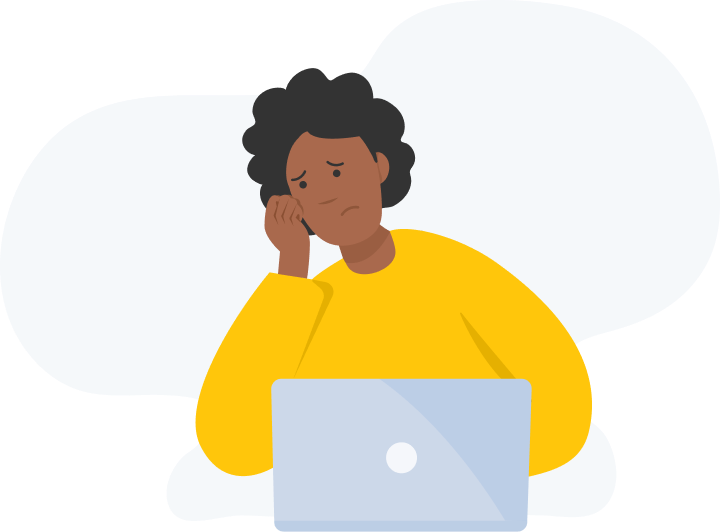
At some point, the follower will send you a direct message to ask for something or share their feedback. Regularly check the Requests tab to prevent your new followers from waiting. This problem, by the way, can be solved at the Following stage with a welcoming message from you. If you communicate with a follower previously, messages from them will automatically go to the Primary folder.
Possible problems:
- Instead of a direct answer, the person receives intrusive sales offers.
- Long wait for a response.
- Rudeness from a brand representative.
- An audio message is an answer to the textual one.
- Several brand employees are involved in the conversation and constantly ask to repeat the question instead of rereading the entire correspondence.
Experience smoothers to consider:
- Write a policy for communication with followers so that the messages from your team are empathic and not too salesy. Determine the frequency with which you will remind the potential client about yourself or ask for feedback on your page and your brand from them.
- Create a table available for anyone who needs it to list the followers you contact and on what issues. So colleagues can easily support any conversation that starts.
Choosing a product
The follower thinks about buying something from you and starts choosing an item. Or maybe something has caught your persona’s eye, and they just got ready to order their precious. It would be great if your account had highlights with items in stock (prices included) or separately grouped posts where one could find this information. Plus, there should be up-to-date data under the posts if the product is out of stock.
Possible problems:
- It’s unclear what items are in stock or when the restock will be.
- The persona has to ask for the prices in direct messages.
- Swatches are too polished or changed in a graphic editor, which sets unrealistic expectations and makes it difficult to understand whether the product suits a particular client.
- There are no texture details in the post description. The client doesn’t understand whether their brushes can work with your shadows, whether your foundation will suit their dry skin, or whether your blush requires a setting powder.
- Promo videos are filmed with models of only one type of appearance.
- No comparison swatches. Sometimes, it’s hard to understand how two pink lipsticks differ if you don’t see their swatches on the same hand. Or how similar the new chocolate shades are to last year's collection.
Experience smoothers to consider:
- When you present a product, show it on different skin types. Describe all its properties and what kind of user it may suit best. Repost in the Stories real swatches of your products, so the clients know what to expect in real life.
- One day per week, encourage your followers to ask for your advice under a dedicated post or in the Stories. You may suggest shades that complement followers’ appearance or match their favorite music. It's a promotional opportunity for you and a fun game for your audience at the same time.
Ordering
Your followers know what they want and place an order. How can they do it? There may be different ways: you will ask them to email your sales manager, redirect them to your landing page with a purchasing form, or accept an order in direct messages. The critical thing to remember is that the channel must be handy for your persona and lead the customer to purchase in the shortest way.
Possible problems:
- The persona cannot pay the way you want.
- The chosen payment method doesn’t work for some reason.
- The sales manager doesn’t respond to the request for a long time. Meanwhile the desired product goes out of stock.
- The persona doesn't receive a confirmation message or email stating that the payment went through.
- The final price is higher because of the packaging.
- No free shipping, even for expensive orders.
Experience smoothers to consider:
- When receiving an order, ask the customer for the purpose for which the client makes a purchase. If it’s for themselves, pick up samples suiting their appearance. If it’s a present, add a gift package and ensure no pricing stickers are left.
- Use the product booking system so that the client doesn’t depend on the speed of the manager’s work and can get the desired product, no matter what. If the buyer decides not to cancel their order during negotiations with the manager, it will return to stock again.
Waiting for the order
The order is on its way to the buyer. And here, your persona would like to be informed of the fate of their purchase. For example, by following the package using the tracking app. Or by receiving your messages at every delivery stage if the shipping company doesn’t share this information with third parties.
Possible problems:
- Delivery is postponed because of the brand (many orders, few packers) or the delivery company (they embellished the deadlines).
- A long delivery because the client lives far away.
Experience smoothers to consider:
- Allow the customer to choose the express delivery option if they are willing to pay for it and reduce the waiting time. You can also pay for express shipping if the client has placed an order for a certain amount.
Getting the order
The client receives a long-awaited parcel. Often, this is the brightest and most joyful moment of their journey. If everything is done right, a new purchase will happen soon. But we don’t live in a fairy tale. In the real world, anything may happen during delivery.
Possible problems:
- An error at the Assembling stage may lead to not all the ordered items being in the package.
- The order got damaged.
- The person received someone else's order.
- Expectation vs. reality: a real-life product differs significantly from promotional photos and videos.
- There’s not a single sampler in the package. Modern buyers expect little compliments from brands and get upset when they don't get any.
Experience smoothers to consider:
- Print a refund/return policy with the contact details to ask for help in case of some issues and add it to the package. Your customers will highly appreciate this gesture of care, even if everything is okay with the order. Plus, not all buyers read the company's policy regarding such situations when ordering something via social media pages, so they may rashly write a negative review without even contacting the brand.
Refund
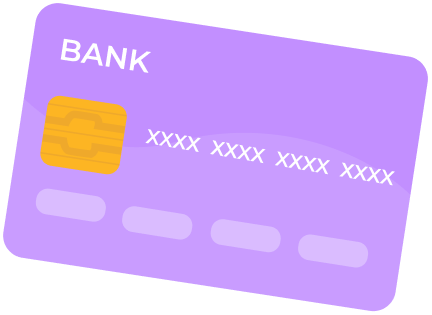
If there's something wrong with the order, your client will probably want some compensation for the money spent, long wait, and shattered hopes. You, in turn, may do a refund, send a new product, or offer a significant discount for the next purchase. It's good when clients have a choice in such situations so they feel that you care about them.
Possible problems:
- You return the money for your products, but the client still has to pay for the transportation service.
- The client lives far away, and they have to wait several weeks for a package from you.
- Money is stuck in the system because of the bank’s fault.
- The client is charged with additional expenses (for example, customs clearance).
- The client wants the same product, but you no longer have it in stock.
Experience smoothers to consider:
- Add a little present as an excuse when you send a new package. Check the client’s likes on your posts to identify what products they like most and choose your gift among these items.
- Don’t hush up the situation. Instead, turn it into a case for stories highlighting that you are taking your client’s side in unpleasant situations and meeting the client’s needs. When brands admit their failures and act on those, it makes a more powerful impact on their clients' hearts when they are pure success.
Re-ordering
The customer returns for another purchase. They already know the process, communicated with the sales manager, and adjusted their expectations to your service. However, changes to the Instagram interface, your team, product lines, and pricing can turn repeat buying into a new experience.
Possible problems:
- The new manager communicates entirely differently. Your client is used to casual communication with jokes, while the new employee answers dryly and formally.
- The price of products or shipping has increased, and you forgot to tell the client about it before the payment.
- There has been no restock of the desired item for a long time.
Experience smoothers to consider:
- Launch a cumulative system of reward points for your clients to redeem for exclusive products that can’t be bought. So, each next purchase from your client will bring them some profit and encourage them to return.
Leaving feedback
Having formed their opinion, customers accumulate complaints and enthusiasm about your brand that they can share right on social media pages. However, not everyone is so open, and not everyone may write reviews on cosmetics because of the concept of their blog. For instance, it will be weird to find a new concealer review on the page of a surgeon).
Also, not every client will praise you, but having honest reviews from real people is a big deal that wins potential customers’ hearts. So, repost even negative reviews and ask regular customers to share their honest opinions.
Possible problems:
- A customer wants to share their feedback but doesn’t know how to do it.
- No one knows what happens with feedback or whether the brand cares. For example, someone reported a defective batch, and even if they discontinued the batch, the brand didn’t inform the client about it.
- No one responds to feedback, even with an emoji reaction, although you see that someone read your message.
- The brand doesn’t accept criticism and answers only to positive messages from the followers.
- A brand blocks a customer after posting a critical review on their IG or the brand’s account.
Experience smoothers to consider:
- When using someone’s feedback to improve customer experience, let this person know what you learned from their message and how you put it into action. For example, a follower suggested reorganizing the content on your page or prompted you to collect specific stories in a Highlight. Let them know you used their idea (DM or tag them in the Stories with this news).
- Share your clients’ feedback in the Stories if they allow it. It will encourage others to share theirs.
Recommending the brand
It’s when your customers promote or sink you when communicating with family, friends, and even random people. Remember that a satisfied client is one of the best promotional channels, while even one dissatisfied client can ruin your reputation on review websites, local forums, and among their friends.
Possible problems:
- Your brand doesn’t have pages on theme review websites.
Experience smoothers to consider:
- Thank your customers, give them a discount or digital products made by your brand, starting a positive chain reaction around your company.
Putting everything together
When backed up with actual data, a journey map is a tool to help you improve customer experience. And it’s a visual tool.
So when building one, you would want to describe a persona's goals, expectations, and actions, include some quotes from interviews or customer feedback to support what you have on the map, highlight where, when, and through which channels the interaction with you occurs, illustrate the emotional journey to better understand your persona’s experience at each stage, show interactions with other parties involved, and storyboards that will tell your persona’s story without words. In your map, you may also add screenshots, embed code, and anything else that seems right in your business case. Anything to make your map easy to comprehend and explain the real journey of your social media customer and their experience with you.
Here’s what you may have in the end:
What to do next
Customer journeys will be as long as you are running a business, changing over time, and requiring new solutions and approaches from you. So it makes sense to return to the maps again and again, updating those with recent data.
Ways to reap insights and benefits using the social media customer journey map:
- Run a journey mapping session where you and your team will enrich the existing map with new insights.
- Organize an ideation workshop to come up with ideas on customer experience improvement.
- Conduct a strategic session to form an action plan based on the journey map.
- Gather to turn the journey map into a service blueprint to review the backend processes needed for a better customer experience.
- Build a TO-BE social media customer journey map to capture a desired customer journey and go for it visually.
- Use your map to onboard new team members, introducing them to your personas and their journeys.
Wrapping up
Social networks have long been a part of our lives, and sometimes, it’s easier to get someone’s attention online than offline, where everyone is still looking at the screens of their gadgets.
Customers' journeys are becoming mixed, flowing from the digital to the physical world and vice versa. The competition intensifies because the Internet is conditionally endless, promotion algorithms change all the time, and all failures remain forever in the network, scaring off a new audience. In such conditions, one should keep abreast of customer experience, be empathic, and respond to customers’ issues and needs in a timely manner.
Ready to delve deeper into your followers’ social media customer journey with our ready-to-go template full of actionable tips?
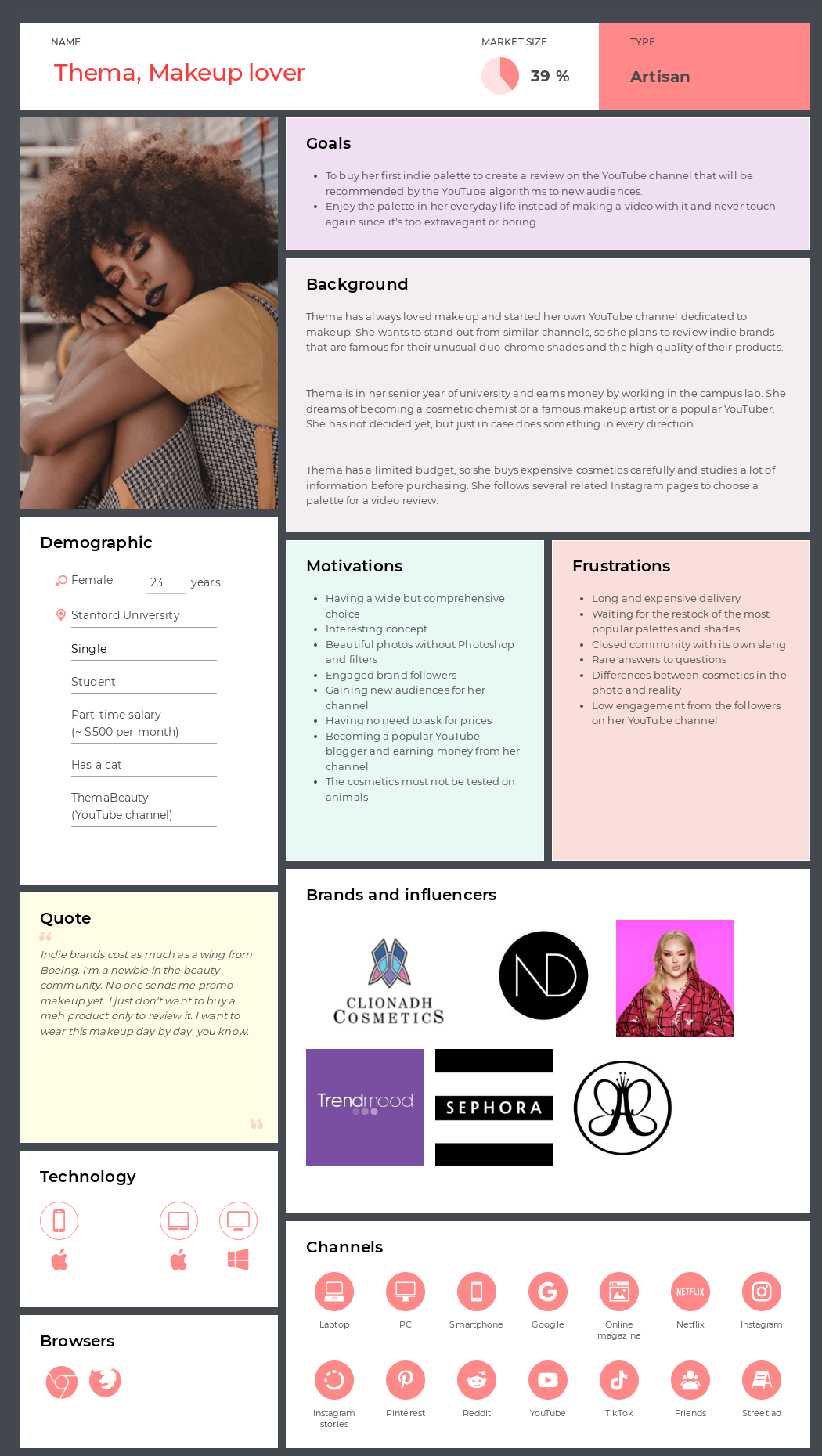
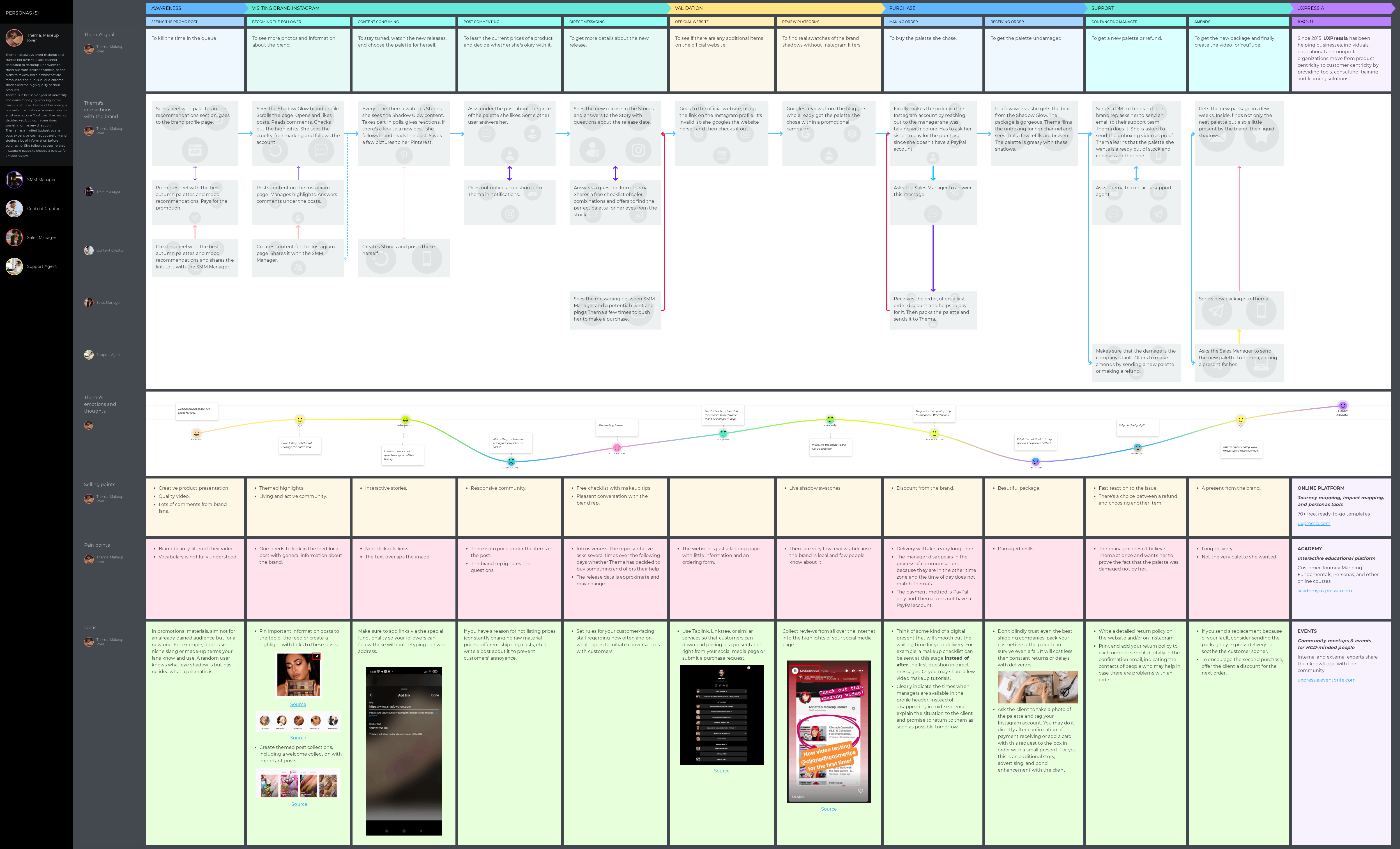


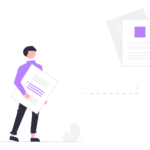

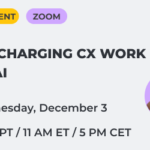

Never seen followers’ experience as a social media customer journey. Or as a journey at all, you know. I don’t sell through social media, but now I’m going to review what my followers go through while reading me.